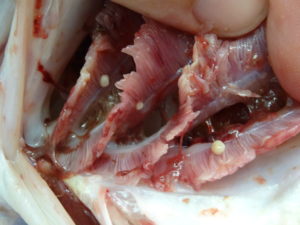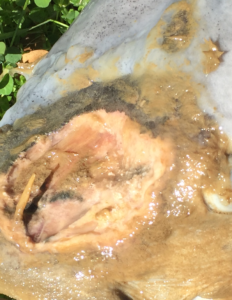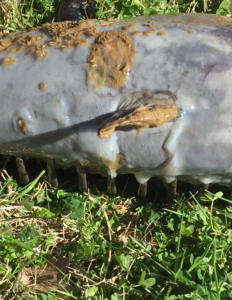Saprolegniasis, also known as winter fungus, is a disease caused by fungi usually in the genus Saprolegnia. Found in freshwater fish and fish eggs, saprolegniasis is a secondary infection typically seen when water temperatures dip below 59°F and then begin to increase in the early spring. A fish suffering from saprolegniasis will exhibit cotton-like growths on the skin and gills, depigmented skin, and sunken eyes. In more severe cases, the cotton-like growths can extend into the muscle tissue. Infected fish will begin to die slowly over time.
During months where rapid change in water temperature is common, extra measures should be taken to prevent or detect saprolegniasis, so now would be the time to take precautions! Saprolegniasis can be prevented by avoiding rough handling, crowded stocking conditions, and poor water quality. To prevent further spread and reduce overall mortality, fish should be harvested as soon as saprolegniasis is observed.
If caught when the infection is superficial, fish can still be harvested and marketed. Infected fish can be sent to The Texas AgriLife Extension Service Aquatic Diagnostic Laboratory for a microscopic exam to identify and recommend treatment for fungal diseases.
For pictures and more information on saprolegniasis, please read Saprolegniasis and Branchiomycosis of Commercially Cultured Channel Catfish.




